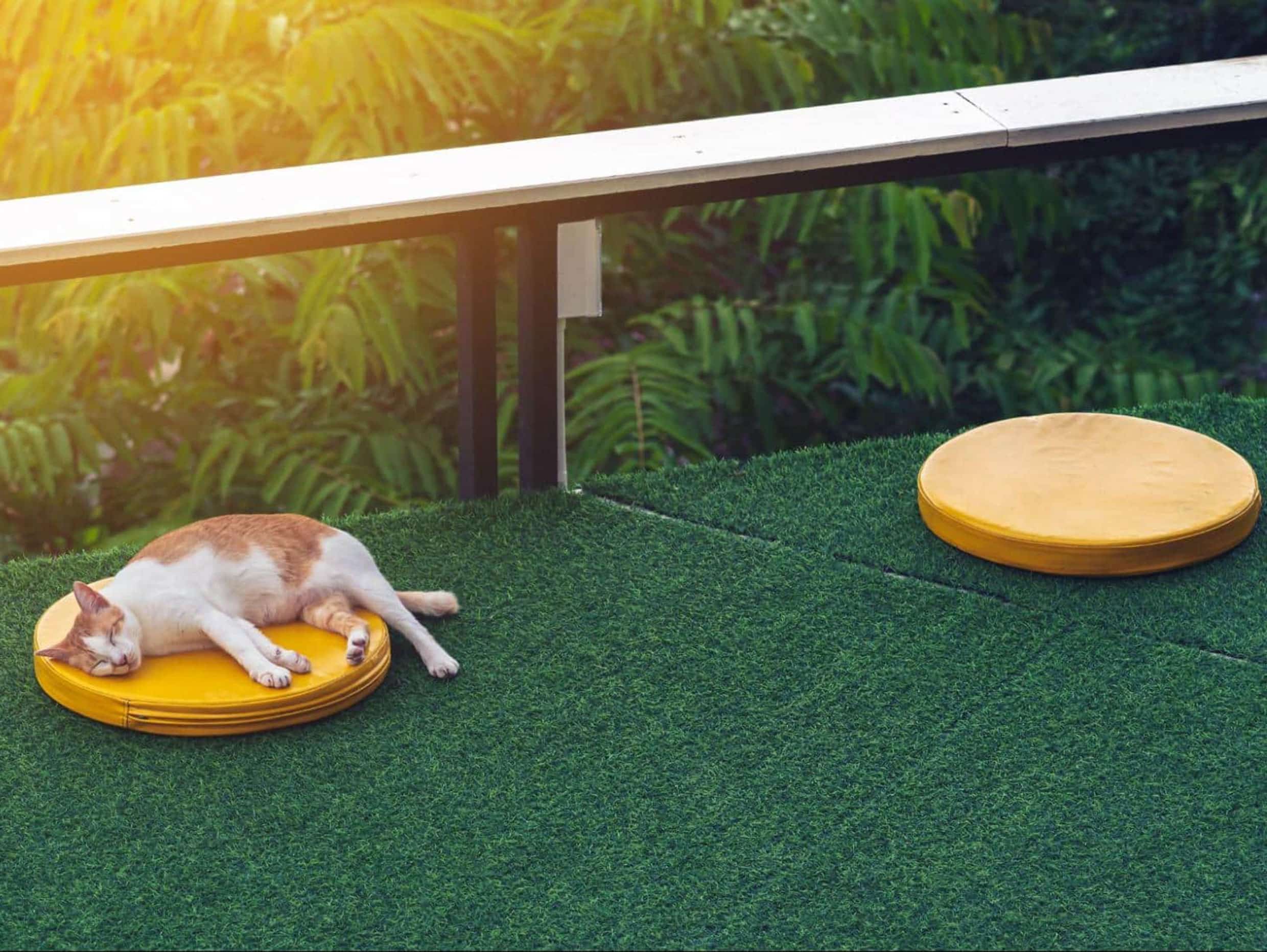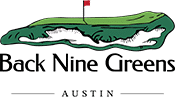Improvements in Artificial Grass Technology

When was the last time you saw an artificial lawn? How did it look? Were you able to take off your shoes or put your hands on it to see how it feels?
If you haven’t had this experience recently, then you might not be aware of how much artificial grass technology has improved in recent years. While it has always been a popular choice in niche circumstances, technological advancements have turned artificial grass into a mainstream option. Below, you’ll find some of the most prominent improvements and why this technology has become so compelling.
Environmental Footprint
One of the most important changes to artificial grass technology over the years is the reduction in its environmental footprint. It is now standard to fabricate many components of artificial turf from recycled materials.
Many grass fibers are made out of recycled plastics. Additionally, fasteners are often made from recycled tire rubber. Because of this, artificial grass is able to save on things like water consumption while simultaneously reducing the amount of plastic and rubber waste in the world.
On top of that, the parts that aren’t made from recycled materials use entirely natural substances. The substrate layers are usually made from sand and/or gravel, both natural materials that don’t harm the environment when artificial grass is installed.
Lowered Costs
As is the case with many developing technologies, the costs of artificial grass have come down. Much of this is related to the efficient recycling methods that make modern artificial grass fibers.
Since used plastics and rubbers are cheap, and the recycling methods have improved over time, the average cost of artificial grass has come down considerably.
Once upon a time, artificial grass was so expensive and new that it was only viable for professional sports stadiums. Today, the costs are such that artificial turf is often less expensive than natural grass, and you can find turf in homes across the country.
Cooler Turf
One of the longtime drawbacks to artificial grass is how hot it gets. In the peak days of summer, it can get so hot that it will burn your bare feet and even the feet of pets. That’s not ideal for a lawn.
Fortunately, new turfs have found solutions to this problem. With better blade designs, the artificial grass can regulate temperature, and it doesn’t get nearly as hot as older technologies.
There are two specific changes to the blade design that help with this.
The first is hollow artificial grass blades. When they are made hollow, there is less plastic material that can hold heat. Inside of the hollow blades is air, which is a good thermal insulator that helps to regulate temperatures.
The other big improvement is the blade shape. By using W shapes in the grass design, the blades absorb less heat and radiate off excess heat much more effectively. Together, these advancements make for much more comfortable artificial grass.
Longevity
Thermal conductivity isn’t the only advantage arising from improved grass blade technology. New designs are also proving much more resilient.
The types of affordable turfs that you could get for a home used to be fairly fragile. They were not viable for high-traffic areas or pets, and that really limited their adoption rates.
Today, you can get better-designed grass that holds up against wear and tear just fine without astronomically raising the cost of the turf. Cheaper grass that lasts longer makes artificial turf a better investment than ever.
Aesthetics
Most of all, artificial grass looks a lot better than it used to. In the past, you could spot artificial grass on a stadium from the blimp view. Today, you can stand on top of the grass and still wonder if it’s real or not.
With these improvements, artificial options have found their way into homes everywhere. They look great, all while coming with virtually no maintenance and a dramatically improved environmental impact. It makes artificial grass very compelling.
Feel
If none of that is enough for you, artificial grass also feels better than ever. Improved fibers are softer and feel lush to the touch. You’ll enjoy walking on modern turf with your shoes off. Pets love it. Kids play on it. Getting artificial grass that feels good might just be the best innovation yet in this industry.
Innovative Infill Options
Artificial grass isn’t just about the blades! Infill plays a crucial role in keeping your lawn comfortable, safe, and long-lasting. Here’s a look at some exciting infill options:
- Temperature-Regulating Infill: Specially designed infill materials absorb and dissipate heat, making your lawn cooler to the touch, even in hot weather.
- Antimicrobial Infill: Help keep your lawn hygienic, especially if you have pets or children. Antimicrobial infill reduces the growth of bacteria and fungi.
- Natural Infill Options: Opt for environmentally-friendly infill alternatives like coconut husk fibers or cork, providing cushioning and support with a reduced carbon footprint.
Exploring the Latest in Turf Technology and Grass Innovation
Today’s artificial grass is not just a substitute—it’s a superior landscaping solution powered by cutting-edge turf technology. Thanks to breakthroughs in synthetic grass techs, manufacturers now deliver surfaces that rival the beauty and feel of natural lawns. From natural turf technology that mimics soil responsiveness to innovative artificial grass solutions with multi-layered backings and cooling agents, homeowners benefit from smarter, more resilient materials. Whether you’re installing for pets, kids, or aesthetics, these innovative artificial landscape grass products provide cleaner, cooler, and longer-lasting surfaces. As grass technologies continue to evolve, LawnPop® remains committed to using the most advanced systems that prioritize comfort, safety, and sustainability.
Smart Lawns, Smarter Choices: Why Technology Matters in Turf Upgrades
As demand rises for low-maintenance lawns and eco-conscious landscaping, homeowners are increasingly asking questions like “how long does artificial grass last?” or “is artificial turf safe for pets and kids?” Modern synthetic turf systems answer these concerns by integrating durable fiber technology, antimicrobial infill, and cooling layers that extend lifespan and comfort. Today’s artificial turf in Austin not only feels real but performs under pressure — whether it’s backyard play, rooftop design, or year-round curb appeal. When you search for turf grass near me or best turf installation, choosing upgraded materials is key to long-term satisfaction.
FAQs: Improvements in Artificial Grass Technology
What is the new technology for artificial turf?
The new technology for artificial turf includes multi-ply backing, enhanced shock absorbency, superior grass fiber design, the development of synthetic turf using eco-friendly materials, and advancements in blade design and structure. These innovations aim to improve the durability, resilience, and environmental footprint of artificial grass.
What are the improvements in artificial turf?
Improvements in artificial turf have focused on optimal surface performance, impressive longevity, reduction in environmental footprint, and the use of eco-friendly materials. Additionally, there have been modifications to include higher pile heights and deeper granular infill materials for a softer feel, along with significant advancements in blade design and structure for a more realistic appearance.
How do you make artificial grass look more realistic?
Making artificial grass look more realistic has been achieved through the development of blade design and structure, which now allows for a more natural appearance. This includes innovations in the shape, color, and texture of the grass fibers, aiming to mimic the look and feel of natural grass as closely as possible.
What is the best way to fix artificial grass?
The document does not provide specific methods for fixing artificial grass. However, general best practices for maintaining and repairing artificial turf include keeping the surface clean, ensuring proper drainage, regularly brushing the fibers to keep them upright, and promptly repairing any tears or seams to prevent further damage. For specific repair techniques, it’s recommended to consult with the manufacturer’s guidelines or a professional installer.
Unlock the Future of Lawns with Lawn Pop’s Advanced Artificial Grass!
If any of this sounds promising to you, then it might be time to consider an artificial grass option. At Lawn Pop, we have a lot of variety, and we can help you choose and design an artificial grass lawn that gives you all of the technological advantages above. Contact us today. We’ll be happy to hear from you and explain everything you need to know about your grass options.



